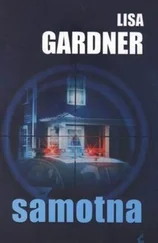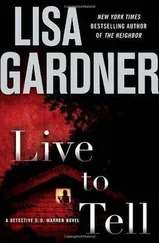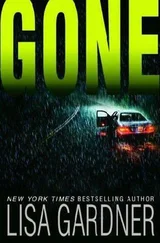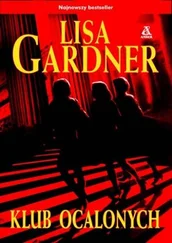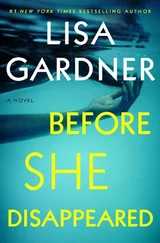“Are we going shooting now?” I asked.
“In a minute.”
He was opening my bag, withdrawing my Taurus. The. 22 looked tiny in his large callused palm, his long fingers better suited for his explosive. 45 than my peashooter. He sniffed at it, looked at me.
“Never put away a gun dirty,” he said.
“Figured I’d clean it after our session.”
“Never put away a gun dirty.”
“Okay.”
“Want to talk about it?”
“No.”
“Good, ’cause I don’t want to know.”
He handed me the Taurus. We both rose to standing.
“She gonna be okay walking?” He gestured to Tulip.
“If we keep her moving. She needs a coat. Maybe later today.”
“Do that. Dog that’s worth fighting for deserves a sweater.”
J.T. started walking; Tulip and I fell in step beside him. It was a mile and a half to his house, tucked away on three acres of land. Perfect for a man with a shooting range in his backyard. Perfect for a man-and his wife-who didn’t much care for company.
“She still alive?” he asked as he walked.
I didn’t need clarification to know who he was asking about. “No,” I heard myself say, another rare admission, a memory barely known and definitely never explored. But if I really thought about it…of course my mother was dead. It stood to reason that if she were still alive, she would’ve contacted me by now. Written a letter from prison or whatever mental institute she was living in. Dropped by the first moment she was released. That’s the whole point of Munchausen’s by proxy-the perpetrator considers herself the victim. It’s all about her-she doesn’t just need sympathy, support, understanding. She deserves it. But I’d never heard from my mother since waking up in the upstate New York hospital. Not a phone call, not a letter, not a peep.
There had been some kind of final confrontation. I’d lived, and my mother…
“Drinker?” J.T. asked.
“No.”
“Drug abuser?”
“Crazy. Just plain crazy.”
“Glad she’s dead then,” J.T. said. “Now get over her.”
“Sure,” I promised him. “Might as well.” I glanced at my watch. “Fifty-eight hours to go,” I muttered. Both of us started to jog.
“QUINCY.”
“This is Sergeant Detective D. D. Warren, Boston PD. I’m calling regarding the criminal profile you developed for Charlene Grant. The January twenty-first homicides. As in two murders down, maybe a third to go, which I’d personally like to avoid. Boston’s homicide rate is high enough, thank you.”
“Detective,” retired FBI profiler Pierce Quincy greeted her crisply. “Spoke to my daughter last night. She apprised me of your investigation. Sounds like you have a plan, something involving social media?”
“Seems worth trying. I understand you studied both the first and second crime scene.”
“Prepared the first report for Jackie Knowles. Wrote the second for Charlene, after Jackie’s murder.”
D.D. hadn’t thought of that. “Sorry,” she murmured, not sure what else to say to the retired profiler.
“Crime scene analysis is easier,” Quincy replied simply, “when you don’t know the victim. Therefore, I must add caveats to my second report. It is probably not as objective as the first.”
“Let’s start with the first murder, the Providence scene,” D.D. decided. “My impression from your report, and the lead investigator, Roan Griffin, is that the perpetrator is someone with a high-degree of self-control, advanced communication skills, above average intelligence, and a good deal of manual strength.”
“Agreed.”
“Male or female?”
“Statistics would argue male. Lack of sexual assault, however, complicates the analysis.”
“Gut feel?”
“Can’t get one from the Providence murder. However, factoring in the Atlanta homicide, where the victim was last seen with a woman, I lean toward a female perpetrator. It would explain the willingness of both women to open their doors, even the thorough cleanup afterward. Granted, many serial killers can be meticulous in their ability to sanitize a crime scene, but few think to tend the sofa cushions.”
“Tend the sofa cushions?” D.D. asked.
“They appeared recently fluffed. A distinctly feminine touch.”
“Fluffed? How can you tell that?”
“Can’t, not definitively. But according to Jackie’s neighbor, Ms. Knowles had a tendency to toss the decorative pillows to one side of the love seat and sit on the other. When the police arrived at the scene, however, the accent pillows were perfectly positioned. In fact, the lower cushions and back cushions of the love seat were smoothed out and neatly squared. As one detective observed, it appeared as if no one had ever sat on the furniture. It was fluffed.”
“But Jackie might have done it,” D.D. countered. “You know, tidying up in case she brought up a ‘guest’ that night.”
“True. I’m offering a theory based on supposition, not fact.”
“Well, at least you’re honest,” D.D. informed him.
She thought the profiler might have laughed, but the moment was brief.
“We need to stir the pot,” D.D. said abruptly. “We have two days before January twenty-first. I’ve got Charlene Grant running around Boston, hiding from everyone she knows and currently armed with a twenty-two semiauto-”
“She has a handgun?”
“Legally registered.”
“Won’t help her.”
“Based on supposition or fact?”
“Both. First two victims never fought back. If they didn’t rip off their own fingernails trying to claw away a pair of hands choking them to death, what makes Charlene think she’ll get off a single shot?”
D.D. swallowed hard, not liking that image. “Maybe they did fight back. The perpetrator cleaned up their hands afterward, after fluffing the pillows, of course.”
“Randi had perfectly manicured nails of above average length. Not a single one was broken. What are the odds of that?”
“Tox screen?” D.D. asked.
“Negative for drugs.”
“Could they have been attacked in their sleep?”
“Possible, but lack of oxygen should have bolted them awake, triggering fight or flight. By all accounts, both were capable of fighting.”
“Then how do you explain the lack of self-defense wounds?”
“I can’t.”
D.D. sighed again. “At least you’re honest,” she repeated.
“Sadly, that’s not helping either one of us. Or, on the twenty-first, Charlene Grant. Has there been any contact?” Quincy asked abruptly. “A note to Charlene, anything?”
“No.”
“Unusual,” he commented. “Very, actually, for a repeat offender to duplicate a pattern so precisely. Most killers describe murder as a physical sensation, releasing a chemical in the brain similar to a runner’s high. The first kill is generally impulsive and anxiety-inducing. But after the dust settles, the killer forgets the fear, remembers the buzz, and begins to yearn again. Next kill cycle may take a bit, but over time, the need for the physiological release that accompanies each murder becomes the overriding drive, shortening the kill cycle, leading to more frenzy, less organization, less control. The killer may try to combat the cycle by turning to alcohol and/or drugs as a substitute for the homicidal high, but it rarely works. On the other hand, it does assist law enforcement efforts as the killer begins to disintegrate, making more and more mistakes.”
“Judging by that logic, this killer is still at the infancy of the kill cycle, if he or she can make it a full year between each victim?” D.D. guessed.
“Technically speaking, this killer isn’t yet a serial killer. Takes three. At this point, we have a repeat offender whose pattern is almost technical in nature. More ritualized assassin than serial predator.”
Читать дальше



